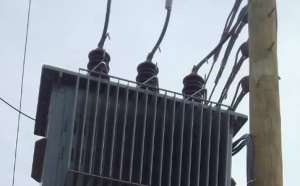
Africa is continent with rich history, culture and tradition, and beautiful people but lacks mainly in social, economic and infrastructural development for many centuries , and this has bedevilled the standard of living of the African people and plunge many into extreme poverty. In 2018 report from the Infrastructure Consortium Africa ( ICA) estimates over 600 million people in sub-Saharan Africa lack access to grid electricity representing for over two-thirds of the global population without power.
Africa’s infrastructure journey in centuries has been in a tortoise-pace , and lags behind the rest of the world in energy, road, rail transportation and water. Its very shameful as a continent we do not have interconnected rail transportation network systems to facilitate and ease trading among member states at least at the Sub-Saharan frontiers . Closing the infrastructure gap is imminently important for the continent to enhance socio-economic development . Africa needs to double her infrastructure investment in order to close the deficit gap, and to be able to contain the rising population and demands . For example , in terms of infrastructure investment per GDP, the Chinese is averaging on 7.7% , Indian 5.2% whilst Africa is 3.5%, and we need to double up above the Indian rate to catch-up, thus , over 6%.
In as much as , Africa must recognise the investing countries/investors for their investment in our infrastructure projects, there’s a need to vigorously work on impactful and feasible projects across the continent and removing any bottlenecks that affects project financing needs.
Laudably, the Chinese infrastructure commitments grew at an average annual rate of 10 % from 2013 to 2017 and have supported many of Africa’s most ambitious infrastructure developments in recent years. For example, China’s EXIM Bank financed more than 90 percent of the $3.6 billion Mombasa-Nairobi Standard Gauge Railway in Kenya. Opened in 2017, the railway cut travel time between the cities in half, and many projects in Africa, which is good sign for Africa.
In Africa’s quest to closing its infrastructure gap is faced with funding and feasibility problems. A recent research revealed that, less than 10% of most infrastructure projects in Africa fail to achieve funding stage and 80% of projects fail at the feasibility and business-plan stages. Although, Africa had made significant progress in attempt to close this gap, however, Africa still lags behind and there is more to do.
In comparison , India had connected over 100 million people to electricity in 2018, compared to just 20 million achieved in Africa. This has led to electricity consumption per person in Ethiopia, Kenya, and Nigeria being less than one-tenth that of the BRICs (Brazil, Russia, India, and China). Furthermore, this unmet demand is likely to increase, McKinsey research forecasts that Africa’s demand for electricity will quadruple between 2010 and 2040. African governments need to prepare for next generation and must address key obstacles to project funding, including project selection, feasibility studies, regulatory delays, risk management, poor program delivery etc .
In conclusion, Africa's longstanding infrastructure deficit poses a significant obstacle to its economic growth and development. Addressing this gap, by increasing investment, streamlining project feasibility, and managing obstacles, is essential for the continent to unlock its full potential and provide a brighter future for its people.
Produced by : Mr. Evans DARKO, Doctoral Researcher , CREM LAB, France.




 Cecilia Dapaah: Reasons behind AG’s advice to EOCO not grounded in law – Martin ...
Cecilia Dapaah: Reasons behind AG’s advice to EOCO not grounded in law – Martin ...
 NPP should have reported Kingsley Nyarko’s conduct to police – Inusah Fuseini
NPP should have reported Kingsley Nyarko’s conduct to police – Inusah Fuseini
 Akufo-Addo cuts sod for MIIF Technical Training Centre
Akufo-Addo cuts sod for MIIF Technical Training Centre
 NPP didn’t struggle to win Ejisu by-election – Samuel Ayeh-Paye
NPP didn’t struggle to win Ejisu by-election – Samuel Ayeh-Paye
 A/R: Achiase Chief arrested for acid attack on community members
A/R: Achiase Chief arrested for acid attack on community members
 Naa Ayemoede returns to school
Naa Ayemoede returns to school
 Dadieso residents block Accra-Kumasi highway
Dadieso residents block Accra-Kumasi highway
 Kasoa soldier killer remanded
Kasoa soldier killer remanded
 Rashid Pelpuo slams Opoku Prempeh for denying dumsor
Rashid Pelpuo slams Opoku Prempeh for denying dumsor
